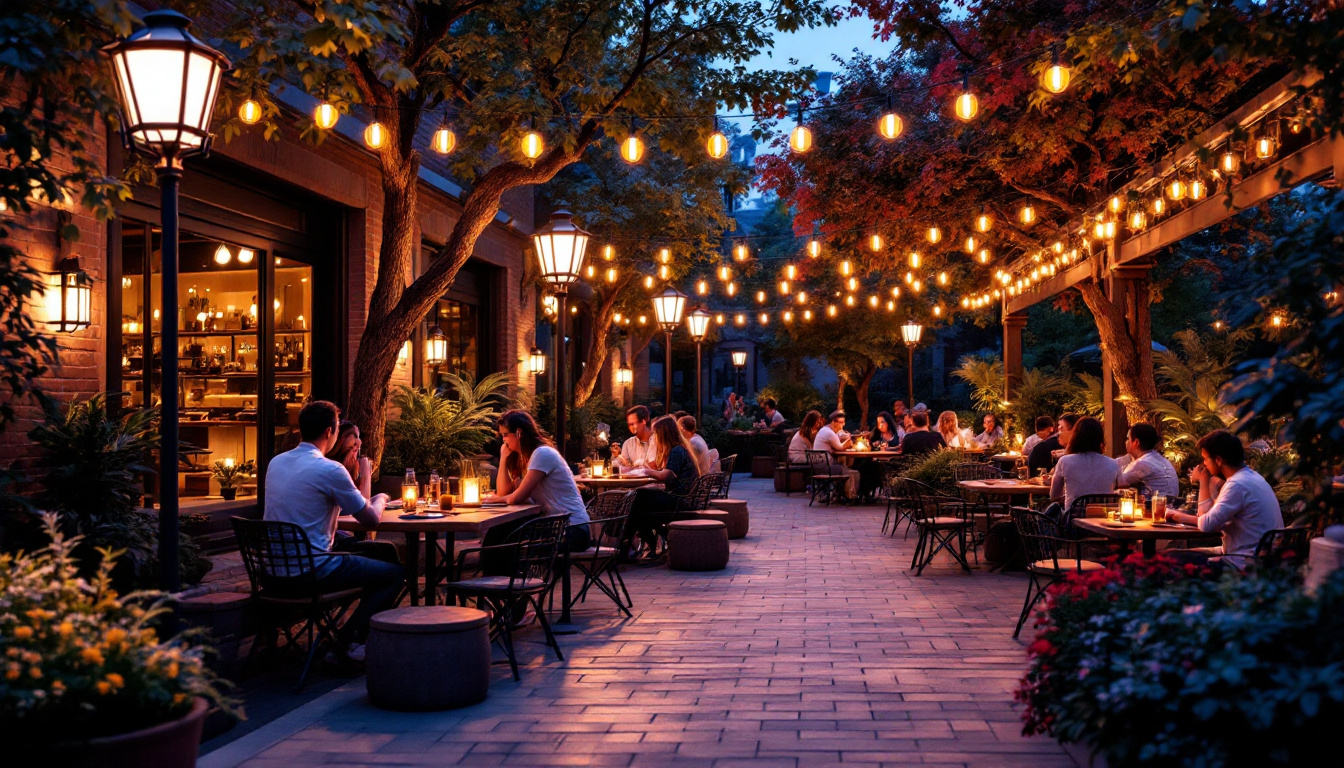
In the ever-evolving world of lighting design and installation, LED linear lights have emerged as a game-changer for lighting contractors. These innovative lighting solutions not only enhance aesthetic appeal but also deliver energy efficiency and versatility that traditional lighting methods often lack. As the demand for sustainable and adaptable lighting solutions continues to grow, understanding the benefits and applications of LED linear lights becomes essential for contractors looking to stay ahead in the industry.
LED linear lighting has gained popularity due to its sleek design and functional capabilities. Unlike traditional lighting fixtures, which can be bulky and cumbersome, LED linear lights offer a minimalist aesthetic that seamlessly integrates into various architectural styles. This adaptability makes them ideal for a wide range of applications, from commercial spaces to residential homes.
One of the most compelling reasons for the rise of LED linear lights is their energy efficiency. LED technology consumes significantly less power compared to incandescent or fluorescent lighting, resulting in lower energy bills and a reduced carbon footprint. For lighting contractors, this means the ability to offer clients sustainable solutions that align with modern environmental standards.
Furthermore, LED lights have a longer lifespan, often lasting up to 25 times longer than traditional bulbs. This longevity not only reduces the frequency of replacements but also minimizes waste, making LED linear lights a more sustainable choice for contractors and their clients alike. Additionally, many LED products are now designed with recyclable materials, further enhancing their eco-friendly profile. As consumers become more environmentally conscious, the demand for such sustainable lighting solutions continues to grow, pushing manufacturers to innovate and improve their offerings.
LED linear lights are incredibly versatile, making them suitable for various applications. They can be installed in ceilings, walls, or even as standalone fixtures, allowing for creative freedom in design. Whether illuminating a retail space, enhancing the ambiance of a restaurant, or providing functional lighting in an office, LED linear lights can be tailored to meet specific project requirements.
This versatility extends to the range of color temperatures available, enabling contractors to create the desired atmosphere for any environment. From warm white tones that evoke a cozy feel to cool white shades that promote focus and productivity, the options are virtually limitless. Moreover, many LED linear lighting systems now offer tunable white technology, allowing users to adjust the color temperature throughout the day, mimicking natural daylight patterns. This feature not only enhances comfort but can also positively impact mood and productivity, making it a popular choice in modern workspace design. As the trend towards biophilic design grows, integrating such adaptable lighting solutions becomes essential in creating environments that foster well-being and efficiency.
Understanding where and how to implement LED linear lights can significantly impact a contractor’s ability to meet client needs. These fixtures are not only functional but can also serve as a focal point in design, enhancing the overall aesthetic of a space.
In commercial environments, LED linear lights are often used to create a modern and inviting atmosphere. Retail stores, for instance, benefit from the ability to highlight products effectively while maintaining an energy-efficient lighting system. The slim profile of linear lights allows for strategic placement, ensuring that every corner of the store is well-lit without overwhelming the space.
Moreover, in office settings, LED linear lights can improve employee productivity by providing adequate illumination. By utilizing adjustable lighting options, contractors can help create a workspace that adapts to different tasks, whether it be collaborative meetings or focused individual work. The use of linear lights in conference rooms can also enhance video conferencing experiences, as they provide even lighting that reduces shadows and glare on participants’ faces, making communication clearer and more effective.
In residential settings, LED linear lights can transform ordinary spaces into extraordinary ones. They can be used to accentuate architectural features, such as coves or recesses, creating a warm and inviting ambiance. Additionally, they are perfect for task lighting in kitchens or home offices, where focused illumination is essential.
Contractors can also leverage the flexibility of LED linear lights to design unique lighting solutions that cater to individual client preferences. By incorporating dimmable options or color-changing capabilities, homeowners can customize their lighting experience, enhancing both functionality and aesthetic appeal. Furthermore, these lights can be integrated with smart home systems, allowing users to control their lighting remotely or set schedules that align with their daily routines. This level of customization not only adds convenience but also contributes to energy savings, as homeowners can ensure that lights are only on when needed.
Additionally, LED linear lights can be utilized in outdoor settings, providing illumination for patios, walkways, and gardens. Their durability and weather resistance make them ideal for exterior applications, where they can enhance safety and visibility while also creating a beautiful outdoor ambiance. When strategically placed, these lights can highlight landscaping features, such as trees and shrubs, adding depth and dimension to outdoor spaces, making them more inviting for evening gatherings or quiet relaxation under the stars.
While the benefits of LED linear lights are clear, successful installation is key to maximizing their potential. Lighting contractors must consider various factors to ensure that these fixtures perform optimally and meet client expectations.
Before installation, thorough planning and design are crucial. Contractors should assess the space and determine the appropriate placement of LED linear lights to achieve the desired effect. This involves understanding the specific lighting needs of the area, such as brightness levels and the type of ambiance required.
Additionally, contractors should consider the integration of LED linear lights with existing lighting systems. This may involve coordinating with other trades, such as electricians, to ensure compatibility and optimal performance.
LED linear lights typically require specific electrical setups for optimal performance. Contractors must be familiar with the wattage and voltage requirements of the fixtures they are installing. Ensuring that the electrical infrastructure can support the new lighting system is essential to prevent issues such as flickering or inadequate illumination.
Moreover, understanding the benefits of using compatible drivers and dimmers can further enhance the functionality of LED linear lights. These components allow for greater control over lighting levels, providing clients with a customizable experience.
While LED linear lights offer numerous advantages, contractors may encounter challenges during installation and integration. Recognizing these potential issues and having solutions in place can streamline the process and ensure client satisfaction.
One common challenge is the compatibility of LED linear lights with existing systems. Older wiring or incompatible dimmers can lead to performance issues. To address this, contractors should conduct thorough assessments of the existing electrical systems before installation. This proactive approach can help identify potential challenges early on and allow for necessary adjustments.
Additionally, educating clients about the importance of using compatible components can mitigate future issues. Providing clear guidance on the selection of drivers and dimmers can ensure that the lighting system functions as intended.
While the initial investment in LED linear lights may be higher than traditional lighting options, the long-term savings on energy bills and maintenance can offset these costs. Contractors should communicate this value proposition to clients, emphasizing the benefits of investing in energy-efficient solutions.
Moreover, offering financing options or incentives for energy-efficient upgrades can make the transition to LED linear lights more appealing for clients. By presenting a clear cost-benefit analysis, contractors can help clients make informed decisions that align with their budgets.
The future of LED linear lighting looks promising, with ongoing advancements in technology and design. As the industry continues to innovate, lighting contractors must stay informed about emerging trends and developments to remain competitive.
One of the most exciting trends in LED linear lighting is the integration of smart technology. Smart lighting systems allow for greater control and customization, enabling users to adjust brightness, color, and even scheduling through mobile apps or voice commands. This level of convenience appeals to tech-savvy clients and opens up new opportunities for contractors to offer cutting-edge solutions.
By embracing smart lighting integration, contractors can position themselves as leaders in the industry, providing clients with modern solutions that enhance their overall lighting experience.
As sustainability becomes a focal point in various industries, the lighting sector is no exception. Contractors who prioritize eco-friendly practices and products will likely see increased demand from environmentally conscious clients. This includes not only the use of energy-efficient LED linear lights but also the implementation of sustainable installation practices and materials.
By aligning with sustainability goals, contractors can not only meet client expectations but also contribute to a more sustainable future for the lighting industry.
LED linear lights are undeniably transforming the way lighting contractors work, offering a blend of energy efficiency, versatility, and aesthetic appeal. As the demand for innovative lighting solutions continues to rise, contractors who embrace these advancements will be well-positioned for success in the evolving landscape of the lighting industry.
By understanding the applications, installation considerations, and future trends associated with LED linear lighting, contractors can enhance their service offerings and meet the diverse needs of their clients. The shift towards LED linear lights is not just a trend; it represents a fundamental change in how lighting is designed, installed, and experienced.
Ready to revolutionize your lighting projects with the efficiency and elegance of LED linear lights? At LumenWholesale, we’re committed to providing you with the highest quality, spec-grade lighting products at prices that make sense for your bottom line. Say goodbye to unnecessary markups and hello to a vast selection of reliable lighting options that meet rigorous industry standards. With the added benefits of free shipping and bulk purchasing simplicity, LumenWholesale is your go-to source for premium lighting solutions. Don’t compromise on quality or value—explore our collection today and bring the best in wholesale lighting to your next project.

Discover the ultimate guide to outdoor LED solar lights with insights from top lighting contractors.

Illuminate your outdoor spaces with confidence using our comprehensive guide for lighting contractors.

Discover the essential insights into Leviton products that every lighting contractor should know.

Discover the essential insights lighting contractors need to know about solar lights, from installation tips to the latest innovations.